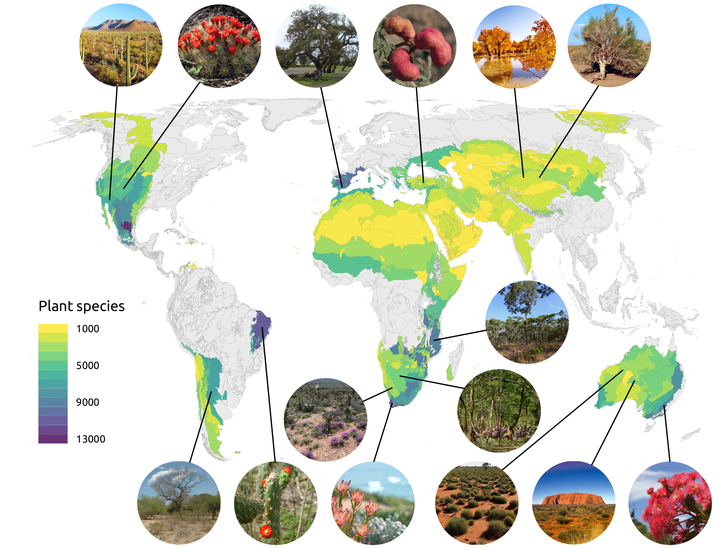 Image credit: Blas M. Benito
Image credit: Blas M. Benito
Abstract
Despite their extent and socio‐ecological importance, a comprehensive biogeographical synthesis of drylands is lacking. Here we synthesize the biogeography of key organisms (vascular and non‐vascular vegetation and soil microorganisms), attributes (functional traits, spatial patterns, plant‐plant and plant‐soil interactions) and processes (productivity and land cover) across global drylands. These areas have a long evolutionary history, are centers of diversification for many plant lineages and include important plant diversity hotspots. This diversity captures a strikingly high portion of the variation in leaf functional diversity observed globally. Part of this functional diversity is associated with the large variation in response and effect traits in the shrubs encroaching dryland grasslands. Aridity and its interplay with the traits of interacting plant species largely shapes biogeographical patterns in plant‐plant and plant‐soil interactions, and in plant spatial patterns. Aridity also drives the composition of biocrust communities and vegetation productivity, which shows large geographical variation. We finish our review discussing major research gaps, which include: i) studying regular vegetation spatial patterns, ii) establishing large‐scale plant and biocrust field surveys assessing individual‐level trait measurements, iii) knowing whether plant‐plant and plant‐soil interactions impacts on biodiversity are predictable and iv) assessing how elevated CO2 modulates future aridity conditions and plant productivity.